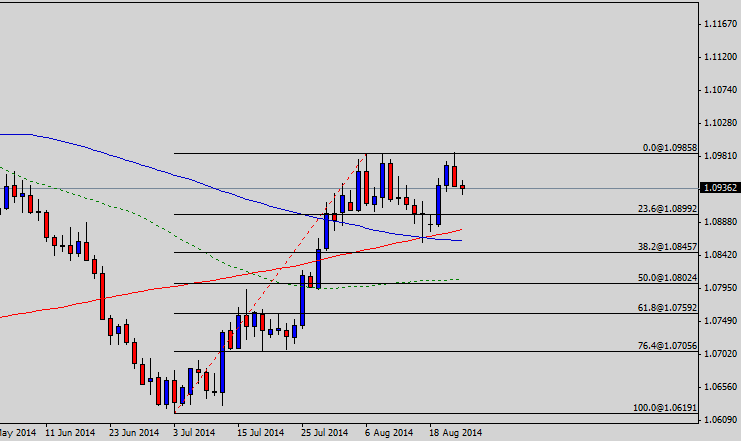FXOpen
USD/CAD slid down on Friday to less than 1.0950, leaving a bearish engulfing pattern on the daily chart which is considered a good indication for the downside movement in short to medium term. Investors are however seen cautious ahead of some key economic releases which are due today in the US session.
Technical Analysis
As of this writing, the pair is being traded around 1.0941. A support can be seen near 1.09000, the psychological level as well as 23.6% fib retracement ahead of 1.0860-80, the confluence of 100 Daily Simple Moving Average (DSMA) and 200 DSMA and then 1.0760, the 61.8% fib level as demonstrated in the following daily chart.
On the upside, the pair is expected to face a hurdle near 1.0985, the horizontal resistance area before the 1.1000 handle which is an important psychological level. The bias will remain bullish as far as the 1.0619 support area is intact.
US Manufacturing
Manufacturing activity in the US increased surprisingly by 58.0 points in August as compared to 55.8 points in the month before, surpassing the median projection of 55.7 points, a report by the Markit Economics revealed yesterday. Generally speaking, a Manufacturing PMI reading above 50 shows expansion in the production level and vice versa.
Canada CPI
The Statistics Canada will release the Canadian Consumer Price Index (CPI) report today. According to the median projection of different economists, the CPI—a main gauge for inflation—remained -0.1% in July as compared to 0.1% in the month before. Generally speaking, higher CPI readings are considered positive for the economy, hence a better than expected actual outcome will be seen as bearish for the pair and vice versa.
Conclusion
Considering the overall technical and fundamental outlook, selling the pair around the current levels appears to be a good strategy in short to medium term as described above.
Trade over 50 forex markets 24 hours a day with FXOpen. Take advantage of low commissions, deep liquidity, and spreads from 0.0 pips. Open your FXOpen account now or learn more about trading forex with FXOpen.
This article represents the opinion of the Companies operating under the FXOpen brand only. It is not to be construed as an offer, solicitation, or recommendation with respect to products and services provided by the Companies operating under the FXOpen brand, nor is it to be considered financial advice.






